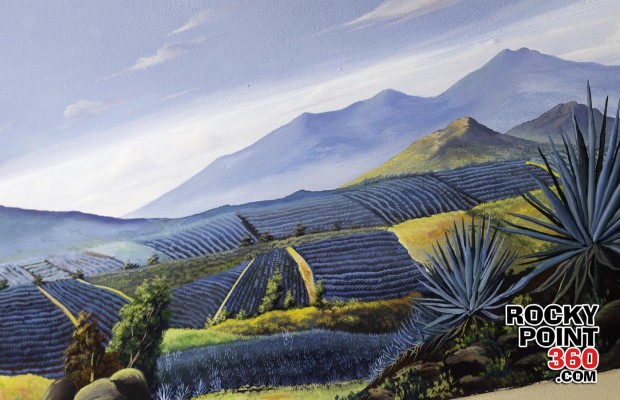Aaaah! Tequila. One of the country’s most emblematic drinks; it can be crystalline liquid or with tints of amber; warming and softly scratching the throat, making us believe we can sing alongside a mariachi. Tequila. It is something that defines us as Mexicans.
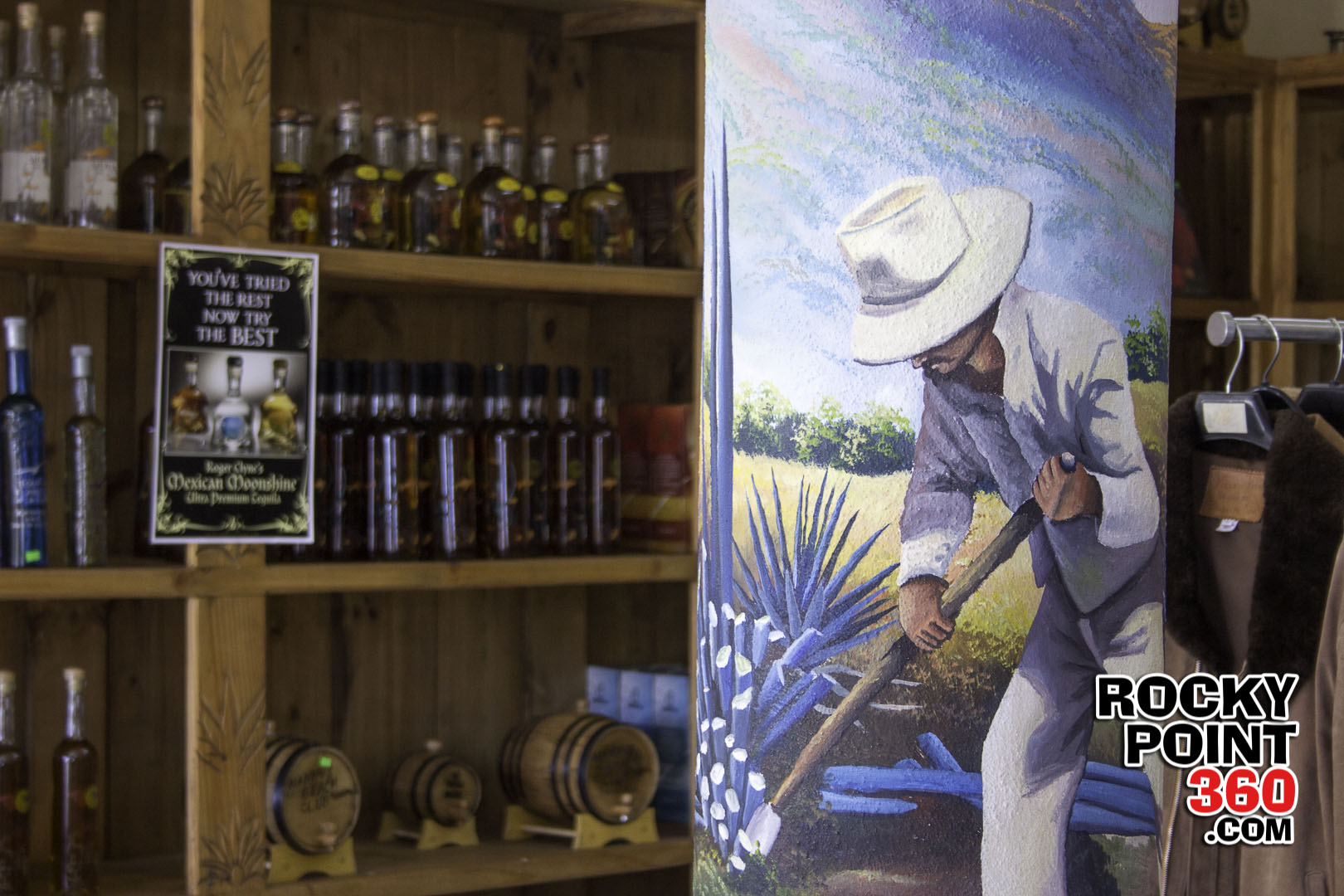 It is the perfect component to margaritas (some more so than others), as well as to the lesser known but equally as delicious Palomas (350 ml of grapefruit soda, 2 shots of tequila and the juice of 2 limes). These are precisely the drinks that bring friends together and make such gatherings legendary (we can’t always say “memorable” as once one goes overboard mental lagoons begin to set in).
It is the perfect component to margaritas (some more so than others), as well as to the lesser known but equally as delicious Palomas (350 ml of grapefruit soda, 2 shots of tequila and the juice of 2 limes). These are precisely the drinks that bring friends together and make such gatherings legendary (we can’t always say “memorable” as once one goes overboard mental lagoons begin to set in).
So, it is normal one would like to learn about the local Tequila Factory and the famous Manny’s Tequila. There it is – located in a blue building along Blvd. Benito Juarez, between Calle 13 and Circle K. I imagine everyone has gone by it, seen it, and pondered the same question upon seeing the word “factory”…do they really make it there?
We opened the door and were received by a rich wood scent and a mural by Bricio Toledo of Jalisco’s agave fields. In the back stood different tequilas and liquor; to the right about four barrels of tequila: white (young), resposado, añejo and a young tequila with vanilla notes. The secret to the flavor, they told us, is in the barrels.
Yet, let’s not get ahead of ourselves in the explanation. Following a quick visual inspection of the area, Fernando Mier and Manny Sanchez appeared.
I believe Manny noted a questioning look across my face as he immediately said, “We have answers to all the questions you may have…well, about the Tequila Factory, perhaps not for other things in life.” He invited us to sit down as other people came in behind us and Fernando left to help them.
We greeted one another and began the typical chat about everything and nothing, preparing the mood for a short interview (or round of questions and answers).
Manny is a good friend; we have been together in various workshops and events, he is very kind and nice. Honestly I don’t know why we hadn’t done this before – a tequila tour.
The folk who had come in were already on their second tequila tastings. Manny was attentive and by the time they left, with two bottles of tequila, my first question arose.
Why is it called a Factory if I don’t see any stills, tubes, or anything for distilling? I thought it would be like a small scale Willy Wonka for spirits. I asked the question with a bit of shame, as I thought I was being indiscrete, yet Manny let out a laugh.
“Everyone asks us that. Once they come in, they take a look around searching for tubes, containers, or some clue as to where the tequila is made. Nevertheless, it is obviously not made here. Very special conditions are required for the preparation of tequila, so we ask people to step into this small room,” he points, “where we show them a video so they can become familiar with the process and help resolve their doubts. We don’t let them go away with nothing.”
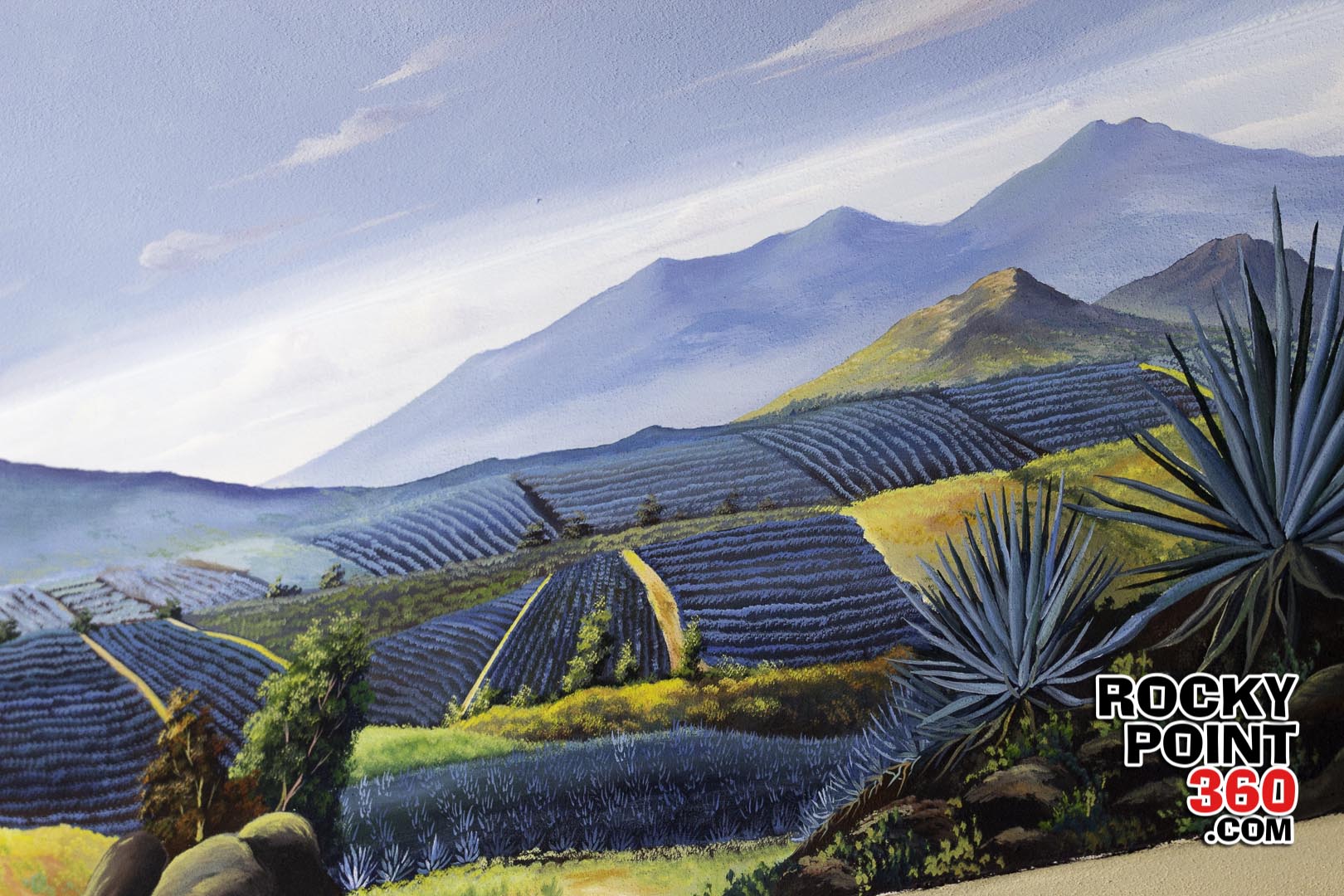 It is precisely in the city of Tequila, in the State of Jalisco, where the true “factory” is located. There we make tequila in the traditional fashion (of course with all the permits and such that is required), but without the industrialized processes of big brands. Our tequila is made by a small family (who are friends, but basically like our own family) who make tequila the traditional way, and have been doing so for three generations.
It is precisely in the city of Tequila, in the State of Jalisco, where the true “factory” is located. There we make tequila in the traditional fashion (of course with all the permits and such that is required), but without the industrialized processes of big brands. Our tequila is made by a small family (who are friends, but basically like our own family) who make tequila the traditional way, and have been doing so for three generations.
“So, no tequila is the same as another,” I add intriguingly.
“No. That is the idea of traditional tequila, as opposed to commercial. This is precisely what makes each one unique. There are very slow processes, which also varies its character, we could say, making it softer or more robust. It depends on many circumstances. That is why the taste is not as standard as with commercial tequilas. They care for it and sometimes experiment a bit with the flavor, making the barrels with one type of wood and then another, or they burn it; they leave it for a certain amount of time and these situations modify the flavor…it all depends.”
“How did the business come about?”
“We used to have a restaurant on the fourth floor, well my Dad had it, and we had wanted to open a place one day that would sell tequila exclusively, but with tastings as there was no place like that here. He had seen this once while on vacation in Tequila, Jalisco and that’s how it’s done…and ‘long story short’ we are the only liquor store that can provide tastings.”
“We’ve been working with tequila a long time. [My father] must have begun when I was in secondary school, more or less, around there. My Dad is a very good friend of the man in Tequila and he would go there frequently; then all of us would go for family vacation to see how everything was going. They taught us a lot of things there. Fernando has also gone and that’s where he learned how to explain everything, as he is the one who provides explanations as to the process, flavor, and all. If there are any questions, he is the one to go to….except that he’s busy right now,” another group had come in, “But, the Tequila Factory officially opened in July of 2006.”
I spot Fernando, who is behind the bar, giving a speech about the flavors of tequila. Wow, I never knew it was so complex! I thought it was all distilling and letting it rest (hence the term “reposado” [rested]) and that was it. However, I can hear there are many more details involved.
“Along with the tequila I see, flavors? Do they also make those?”
“Yes, they’re tequila based flavored drinks and they also make those. We offer this, depending on the season and demand for each flavor.”
“The idea here is that people can come and taste tequila, not just buy it when they see the label. So when they like it, they can buy it, which is what almost always happens,” he laughs, “We are that sure about how good it is.”
You can find various tequilas here, our tequila which is Manny’s Beach Club, one named Rocky Point, Peñasco Tequila by Larry Large, and Roger Clyne’s Mexican Moonshine.
“And the same family makes all of [Manny’s Beach Club tequila]? So, what is the difference between one and another?
“Manny’s Beach Club, which is ours is done by our family friends (La Cava de los Compadres), I’m not sure who makes the others, they have their own people.”
“So, as to the difference in flavor, in addition to the barrel, bacteria also has a lot to do with the fermenting process. Depending on the success of the tequila, this may be the best kept secret! Then, the time in the barrels is what gives it its flavor and name, for example: blanco, which comes from the distiller into the bottle, el jovén is in barrels for about three days, el reposado for around 3 to 11 months and añejo from 11 months to 4 years. After 4 years it is called Antiguo o Reserva. It’s not recommended to leave tequila longer than that because it begins to taste sour.”
“What happens if I want to buy a barrel?” Sorry, I had to ask – I mean with so many weddings and events. Honestly, it would be very interesting to serve drinks from the barrel.
“If you like we can get you a barrel, there is a one liter, from 5 to 10, from 50 up to 200 liters… we can even put your name on the barrel if you like.”
“Do they send the barrel from there [Jalisco]?”
“No, we can’t do that due to certain regulations. But we’ll take care of everything, don’t worry. Just remember you have to finish it off within 6 years at the most,” he bursts out laughing and then explains, “Everything has to be bottled and sealed before reaching here. All the tequila has completed its process and time in the barrels, depending on the line (reposado, añejo, reserva). So, when someone selects a barrel and the tequila, we pour it in there. Obviously this tequila, in addition to being handcrafted, is going to be unique because it’s going to have the taste of that special barrel.”
Now that Fernando is no longer busy, Manny decides it’s his turn to talk.
Fernando has been at the Tequila Factory since the beginning and as a good friend of the family he’s also gone to Jalisco and to the distillery. He learned everything he knows about tequila there and just last year went there for vacation.
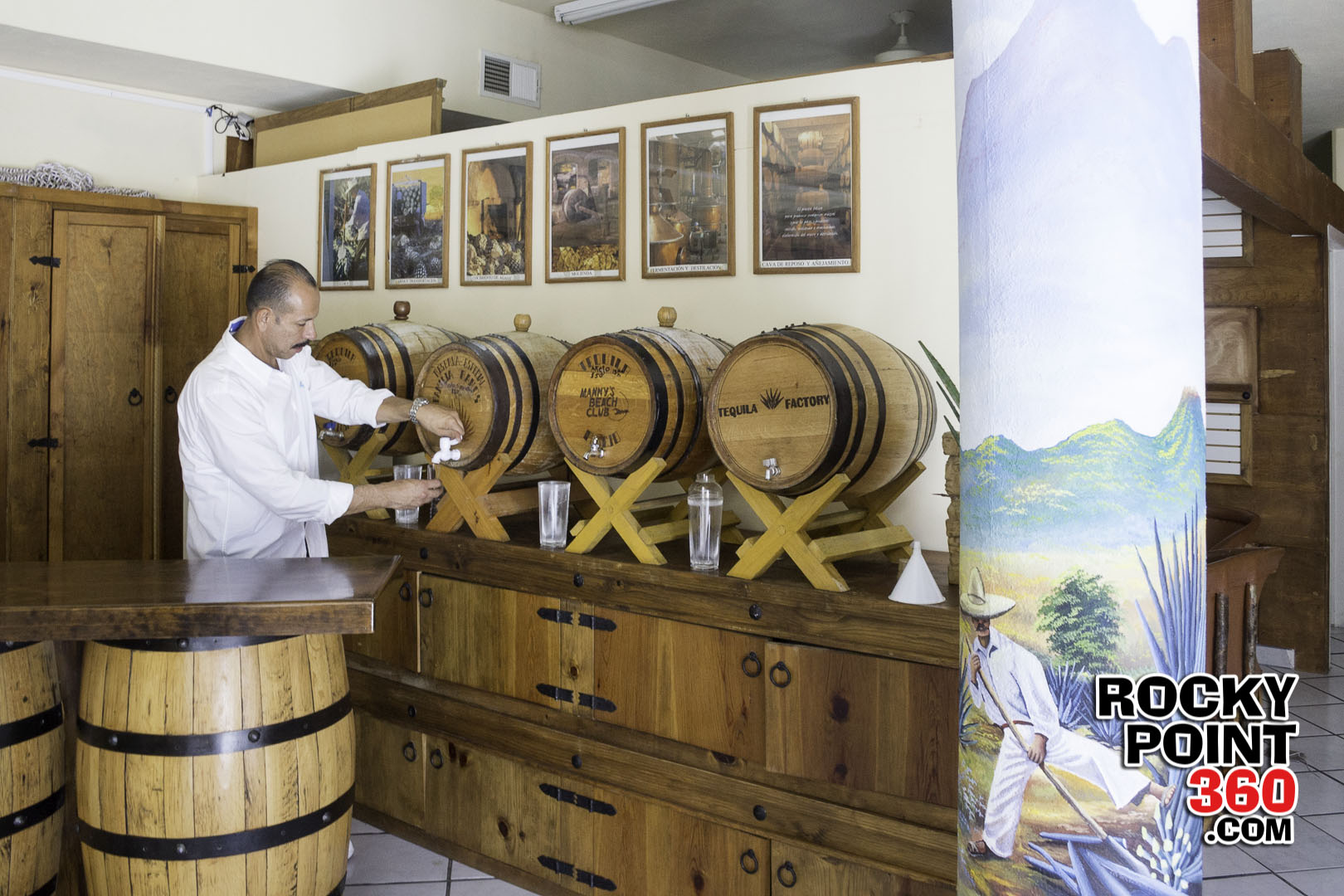 “I am the one who welcomes all the clients. I do the presentation, I sweep, I mop, I clean windows, do errands…” Fernando starts to say between laughter. “It may be a joke, or it may not…but anyway,” he becomes serious, “I see clients come in looking for something and normally I answer questions they have yet to ask because, if it’s their first time, they come in thinking it is a distillery. They’re looking for something that shows this is a “factory” or “tequila manufacturer”; when they don’t find anything, they are disenchanted. So, as not to disappoint I offer to put the video on for them and explain where our tequila comes from, and why it would not be good to have a distillery here (due to soil, climate, altitude, etc.). Once they are calmer, we go to the tasting and they’re happy by the time they leave. If they are already regular clients, normally they ask to try whatever’s new, we joke, they buy something, and leave.”
“I am the one who welcomes all the clients. I do the presentation, I sweep, I mop, I clean windows, do errands…” Fernando starts to say between laughter. “It may be a joke, or it may not…but anyway,” he becomes serious, “I see clients come in looking for something and normally I answer questions they have yet to ask because, if it’s their first time, they come in thinking it is a distillery. They’re looking for something that shows this is a “factory” or “tequila manufacturer”; when they don’t find anything, they are disenchanted. So, as not to disappoint I offer to put the video on for them and explain where our tequila comes from, and why it would not be good to have a distillery here (due to soil, climate, altitude, etc.). Once they are calmer, we go to the tasting and they’re happy by the time they leave. If they are already regular clients, normally they ask to try whatever’s new, we joke, they buy something, and leave.”
“What do you tell the people who come in?”
“Well, before the tastings I tell them how tequila is an age-old tradition, one that has existed since before the Spanish arrived and said, ‘this is Mexico’, the ancient ones already knew how to perform their rituals and fiestas with tequila.”
“I then explain the difference between blanco, reposado, and añejo, which are what we have now in these barrels behind the bar. We now have a fourth barrel, which is an experiment that has been coming out really well. Come and try it.”
“Well, I think Manny already told you …though he can be a liar,” jokes Fernando as Manny comes back out of the office. Manny responds, “yes, it’s true, that’s why you’d better explain,” and he laughs along.
I love the relaxed mood of this place; ever since we got here it’s been pure laughter, jokes, and good times. What else could it be when working in a tequila environment?
“There are like two-hundred types of agave in Continental America,” continues Fernando, “but we only use blue agave for tequila and it can take 7 to 12 years to grow to its point. The leaves are cut and only the heart of the agave is used. That is why there are millions and millions of agaves growing…it’s like you see on the mural at the entrance. That’s what the highways around Tequila in Jalisco look like…that blue tone goes up and down the mountains. It’s beautiful!”
“The heart of the agave is then cooked for 20 to 30 hours until it becomes a type of sugar, it caramelizes and that’s where the aguamiel (honey) comes from as well as agave honey… Delicious, by the way! It is then milled, drained, filtered, and fermented. The fermentation process is where it becomes alcohol; you can call it agave wine if you like, or agave beer because it’s not quite ready. After it has been distilled twice, then you can call it tequila.
This tequila is clear, which is what is called “blanco” or “plata” silver, and then it can be bottled or put into barrels where it gets the amber color and is lighter or stronger, depending on how long it’s there. It is very important to select the wood well, so it does not leave a sour or ill taste.”
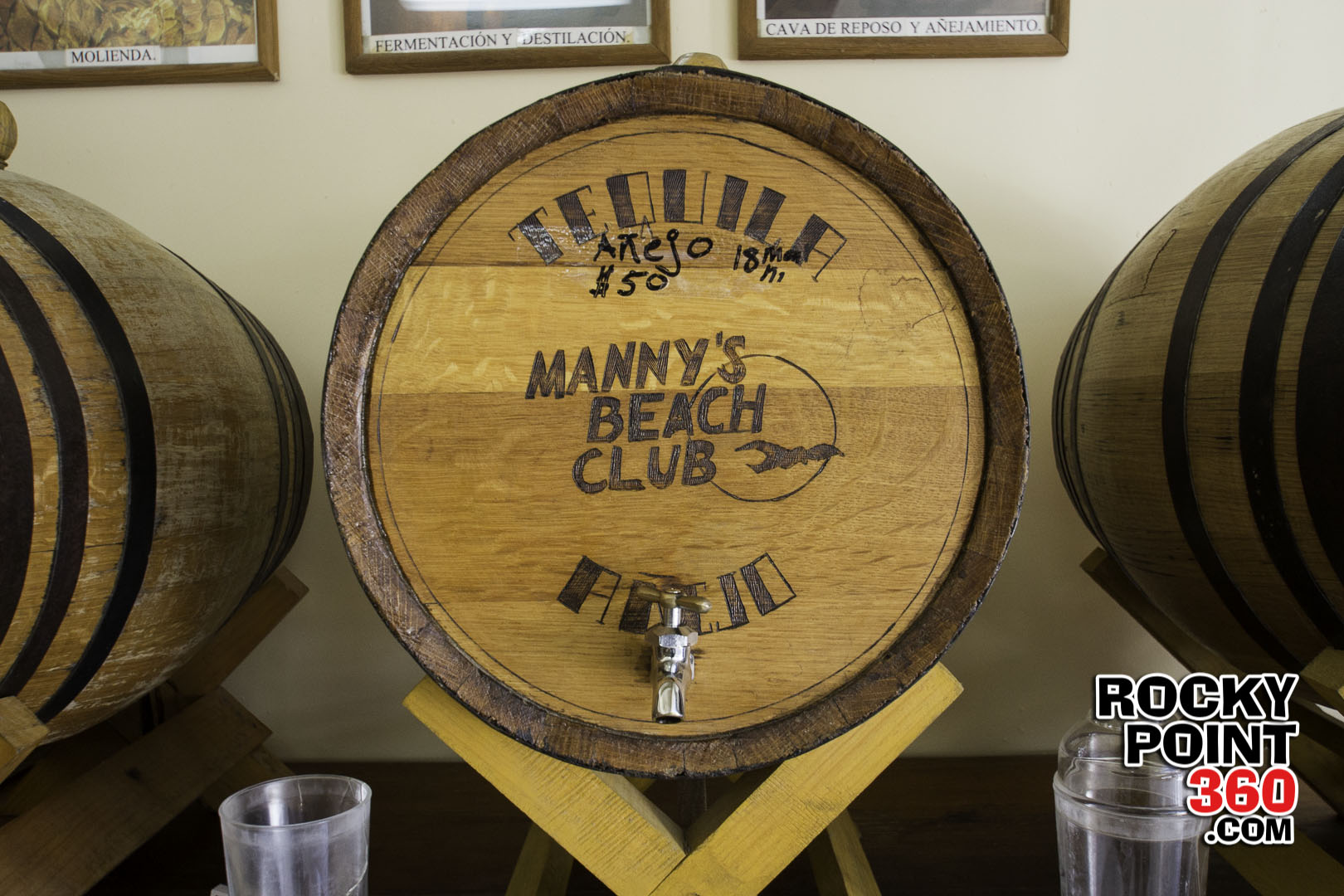 “What is important, however, is you cannot leave it for more than 6 years (well, depending on the size of the barrel) as then it wouldn’t taste like tequila, but rather like wood. Try one that has been in for a long time and it like chewing on wood and, well, that’s not right.”
“What is important, however, is you cannot leave it for more than 6 years (well, depending on the size of the barrel) as then it wouldn’t taste like tequila, but rather like wood. Try one that has been in for a long time and it like chewing on wood and, well, that’s not right.”
“Looking for the equilibrium between the taste of tequila and wood has its science. What is rich is when you open a bottle and without even trying it, you can sense the aromas, the notes, the oak, vanilla, caramel, smokiness…”
“I used to not know anything about tequila, other than that it was strong and gave you a terrible hangover. But, little by little I have learned and well, it’s not just for margaritas or for taking a shot, but rather good tequila is worth taking the time to taste and sip little by little. And well, basically, that’s it….”
“Yes, I believe so,” I say, looking sheepishly at the clock as we’ve gone a bit over our time, though no one seems put off at all.
If you have any other questions, there is also our page tequilafactory.mx or look for us on Facebook.
Actually, I did have a question…. “I’ve heard there are many ways to prevent headaches and the subtle heaviness that tequila can bring on, any advice for people so they don’t get terrible hangovers with tequila?
“Obviously it’s not to go overboard, right? But, if you go a little over, be sure to do so with good tequila. That is a question of quality. ‘Cheap’ tequila, to put it that way, is what gives you that headache that knocks you out or makes you nauseous. Usually it’s because it’s not pure blue agave; during fermentation they add sugar cane…So, if the label doesn’t say 100% agave (it says other things like “Gold” or “Mixed”) then get ready for some pretty serious hang overs. A good tequila shouldn’t make you feel that way.”
“That’s also why a lot of clients return. We have some that have been coming for years because in addition to liking the taste, they say they can drink a bottle between three or four people with no problem, that it doesn’t give them a hangover and everyone wakes up happy…though perhaps a bit thirsty.”
I then hear Manny say, “Come over here, I can tell you’re thirsty!” He was already behind the bar, “Ok, here’s the second part of the tour! Tasting!”
“Here’s a tip,” comments Fernando as he opens the refrigerator, “if you’re going to drink tequila, always use chilled shotglasses.” He pulls them out of the freezer and pours from the first barrel…while Manny takes our picture.
The fourth mysterious barrel, the fourth one behind the bar that Fernando had told us about, was definitely a pleasant surprise; the tequila tasted like vanilla. You’ve got to try it!
